Review for Last Hurrah For Chivalry & Hand Of Death: Two Films By John Woo
Introduction
I’m not a fan of John Woo, which is not the best way to start this review. Then again, I’ve only really seen his Hollywood output. I first saw Broken Arrow, which I thought was fun, with spectacular action and pure comic book characterisation. Then I saw Mission Impossible II, which as well as being a stinker of a movie, felt like a John Woo parody. Lastly, I remember watching Face/Off, and I was certain that we were in parody territory. There are only so many two-fisted, jumping sideways gunfights you can see, so many doves in flight before watching a film becomes a drinking game. But John Woo has also made Hong Kong action movies, and it turns out for many years before his signature pieces Hard Boiled, and The Killer. Eureka Entertainment are now bringing us two of his earliest films, Hand of Death from 1976, and Last Hurrah For Chivalry from 1979. Both are classic kung-fu movies. No sideways jumping gunfights in sight!
It’s a two disc collection from Eureka, although I haven’t seen the packaging to comment. You also get a 36-page booklet to go with the films for the initial print run, and I got to look at a pdf file of the latter. You get a cast and crew listing for both films, a newly commissioned essay from Matthew Thrift, and the reprint of an essay from Frank Djeng, originally printed in the Tai Seng laserdisc sleeve for Last Hurrah For Chivalry, as well as an artwork gallery.
Introduction: Hand of Death
The Manchu invaded and to impose their rule, they cracked down on anything that might threaten their power. That meant martial arts, and that meant the Shaolin Temple. Worse, some disciples of the Shaolin way actually betrayed the order, chief among them Shih Shao-Feng, who led a slaughter in the temple walls. But some disciples escaped to the mountains, and the time has now come for retribution. But only one of the students, Yun Fei is skilled enough to face Shih Shao-Feng. Skill may not be enough to deal with the villain however, as Shih Shao-Feng’s spies are everywhere.
The Disc: Hand of Death
Hand of Death gets a 2.35:1 widescreen transfer taken from a 2k restoration. Having never seen the film before to compare with, it looks fantastic. The image is clear and sharp, colours are strong and consistent, although reds are just a shade away from being saturated, while detail levels are excellent. The location cinematography really shines well. You have a whole heap of audio options, PCM 2.0 Stereo English, Cantonese and Mandarin, and PCM 1.0 Mono Mandarin and an alternative English dub. You get two subtitle translations, one for the Mandarin audio, and one for the Cantonese language. As so often happens with classic Hong Kong cinema from Eureka, the least complex, i.e. the original theatrical experience is the way to go. I gave the Cantonese stereo a try and found it to be subdued and flat, while the Mandarin stereo was much the same, but with the music buried in the mix even more. The Mandarin mono offers the best experience with the film, the dialogue is clear and crisp, the music comes across well, and the action is defined and sounds discreet, although with a film of this vintage, you can expect a bit of distortion at higher volumes and frequencies. The subtitles are accurately timed and free of typos.
Extras: Hand of Death
The disc boots to a static menu.
Here you’ll find the trailer for the film, running to 3:58.
There is a vintage interview lasting 22:50, From Hong Kong to Hollywood: An Interview with John Woo. This is in 720p.
You also get an audio commentary with Mike Leeder and Arne Venema that is well worth listening to.
Conclusion: Hand of Death
I tried to like Hand of Death. I was looking out for all the directorial flourishes, the aspects of the film that set it apart, the more complex edge to the characterisations, and they were all there. The production value is evident from the start of the film, and there is an intricacy to the storyline that goes beyond many of this film’s peers. But the fact of the matter is that by the end of the film, slumber had overwhelmed me. It may be technically impressive, but Hand of Death is like every other kung-fu movie that was being made in the seventies. Master is defeated by a pernicious, back-stabbing villain. Disciple goes looking for revenge, fails at the first attempt. Training montage ensues before a rematch where he uses a new kung-fu style to finally succeed.
Hand of Death has a slightly bigger scale when it starts with the Qing and the slaughter at the Shaolin temple, and the story is driven more by national politics and the high level machinations of a resistance movement; but in the final analysis, it really is the same movie made yet one more time.
It is notable as the first, to my knowledge appearance of the Three Dragons together, with Jackie Chan appearing as a deceptively itinerant woodcutter who becomes the hero’s sidekick, Sammo Hung as a bucktoothed henchman to the villain, and Yuen Biao in a bit part as a spear-man (as well as other stunt roles). Sammo Hung was also the stunt co-ordinator on the film. It certainly tells in the imagination in the action sequences, although some of the editing and continuity in the fights can be lacking, with hits that don’t appear to connect on screen.
The storytelling does impress with characters’ loyalties unclear until the story needs them to be established. There are certainly a few surprises in the story, the odd betrayal, and the occasional red herring. You also get characters with complicated back-stories that offer dimension to their motives. John Woo clearly takes a page out of the Spaghetti Westerns’ book in the way he directs the film, with Yun Fei very much in the ‘man with no name’ mould.
The bottom line however is that it is another ‘disciple getting revenge for his master’ kung-fu movie. You can get through these on autopilot.
6/10
Introduction: Last Hurrah For Chivalry
It was supposed to be a celebration of Kao Peng’s engagement, but when Pai Chung Tong’s people gatecrash the party and attack the guests, driving Kao from his father’s villa, humiliating him in the process, Kao swears revenge. However with all but two of his retainers dead, he’ll need help. So he goes about recruiting a couple of swordsmen to his cause, Chang Sun and Ching I. But when a man seeks revenge, no one wins...
The Disc: Last Hurrah For Chivalry
You get another excellent transfer here; once again a 2.35:1 widescreen 1080p presentation taken from a 2k restoration. The image is clear and sharp, with wonderful colours, excellent detail, and no sign of compression or other such artefacts. The action sequences come across very well, so well that you can see the seams, and the sets, locations and costumes impress with their production value. You have the choice between PCM 2.0 Stereo Cantonese and Mandarin, and PCM 1.0 mono English and Cantonese, and there are three English subtitle tracks depending on which language option you need them for. I was happy with the Cantonese mono, sounding authentic and clear, with no distortion and glitches. The subtitles are accurately timed and free of typos.
Extras: Last Hurrah For Chivalry
The disc boots straight to a static menu.
On the disc you’ll find an interview with John Woo lasting 15:17 and presented in 720p.
The theatrical trailer lasts 4:34.
Finally there is another interesting and detailed commentary from Mike Leeder and Arne Venema.
Conclusion: Last Hurrah For Chivalry
I ask only one thing from the movies I watch. Just please don’t put me to sleep. I had the best hour’s kip in front of Last Hurrah for Chivalry I’ve had in front of any movie I’ve slept through. I woke up rested and tranquil, then peeved at the prospect of watching the film over again to see what I’d just missed. I’m not sure why this was so, as on paper, Last Hurrah for Chivalry sounds great, a film that does much that is different from the sort of period kung-fu that was coming out of Hong Kong at the time, telling a darker, more nihilistic tale.
Any other movie would be clear cut about the heroes and the villains, the wronged Kao Peng the victim, the swordsmen he recruits to his cause the heroes, and Pai Chung Tong the villain, but right from the first scene, it’s established that Kao’s father stole the villa from Pai to begin with, Kao is shown to be an opportunist, Ching I is a hard drinking killer, while Chang Sun, the most amiable of the characters, is still the kind of man who sides with child pickpockets against their victims. As the story unfolds, it’s full of twists and turns, betrayals and counter-betrayals, and there comes a point where there’s no one left to root for.
None of the characters really had the kind of charisma that would carry the film, while the story doesn’t really shine on screen the way you might hope. Once again, the action actually lets the movie down. There’s a lot of it, but the choreography is weak, and the direction doesn’t help it shine, and the lack of continuity in fight sequences kept on throwing me. There’s no logical sense to the action, not helped by a final scene which suddenly goes all Wuxia, with one of the characters flying off into the trees at the drop of a hat. Also with sword-fight sequences lasting several minutes, it becomes a stultifying dirge of ‘clang, clang, clang’ which played no small part in putting me to sleep.
I found Last Hurrah for Chivalry to be dull, which is a sentence I never thought I’d write about a kung fu movie.
5/10
In Summary
Let’s face it, these two films aren’t the way into the John Woo catalogue that I’d hoped for, not even with the familiar touchstone of the three dragons in Hand of Death. I can recognise that the films are outside of the norm in their genres, and if you are a John Woo fan, then they are certainly interesting to watch, to see the seeds of who the director would later become. Eureka’s presentation is top-notch once more, and on a technical level there’s very little lacking from these discs. But for me, I just couldn’t enjoy them, instead found watching them a chore.
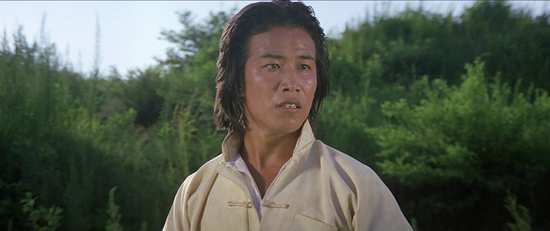
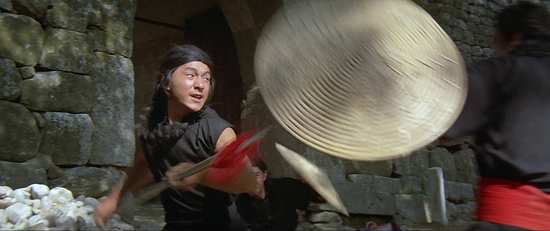
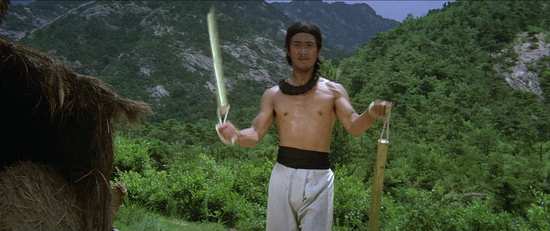
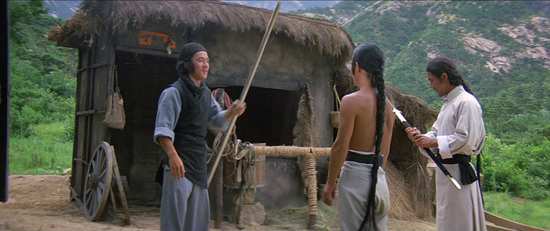
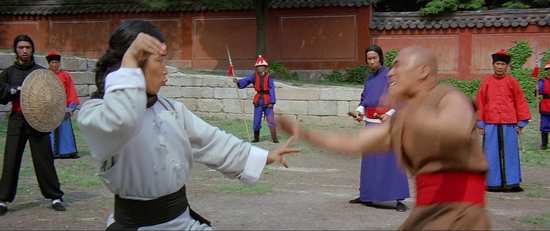
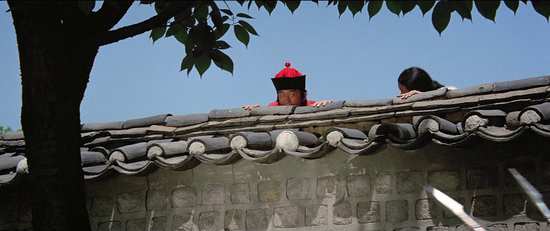
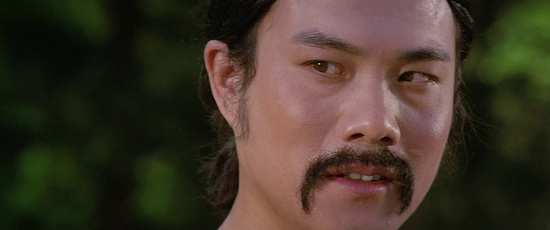
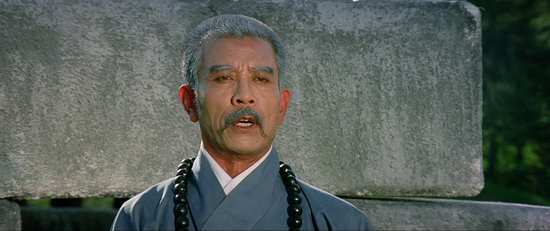
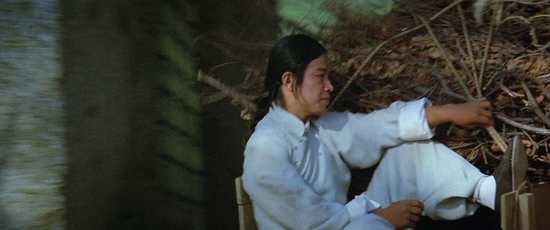
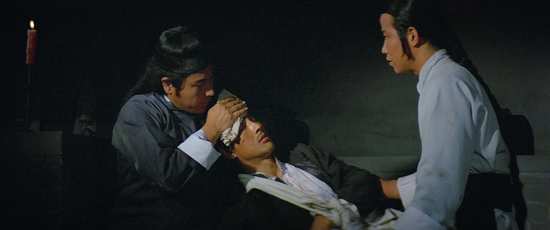
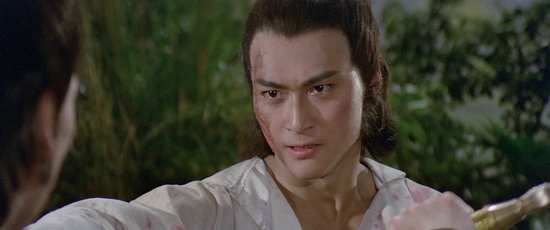
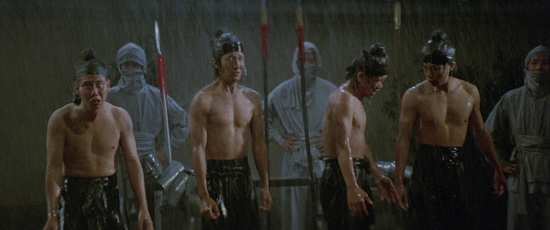
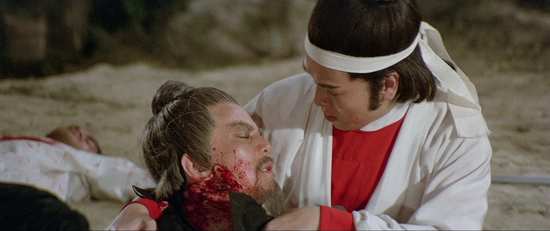
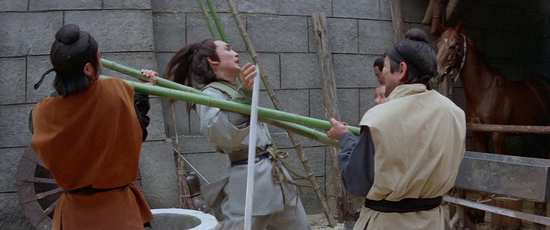
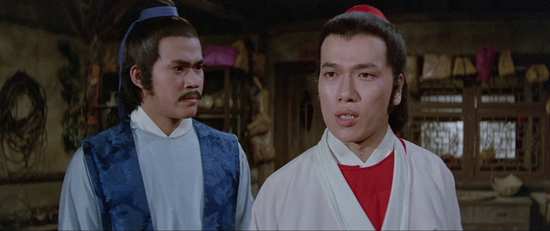

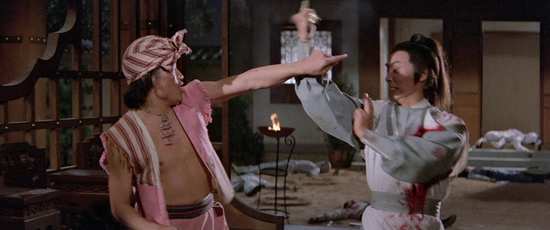
Your Opinions and Comments
Be the first to post a comment!